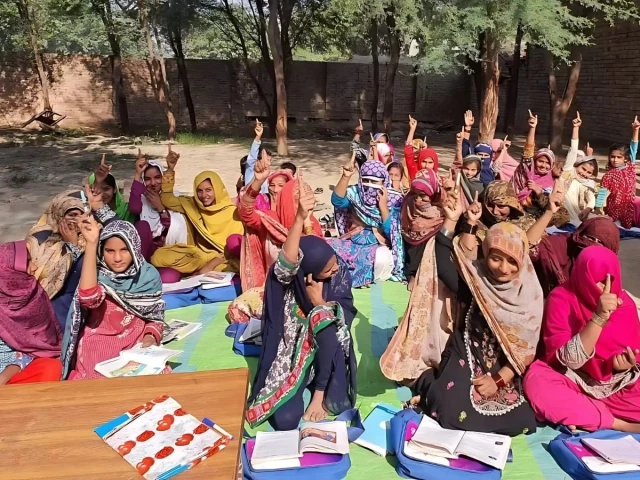Punjab’s educational challenge is twofold: a high number of out-of-school children, with approximately 10.5 million children not attending school, and persistently low learning levels among those who are enrolled.
Despite significant progress in increasing school enrollment rates, millions of children, especially in rural and marginalized areas, remain outside the education system. For those who do attend school, the quality of education is often substandard. Over 50% of children in grade 5 fail to achieve the necessary proficiency in literacy and numeracy expected at the grade 3 level.
This combination of low access to education and poor learning outcomes contributes to widespread learning poverty, leaving many children ill-prepared for the future. Addressing these issues requires urgent reforms to both increase enrollment rates and ensure that schools provide meaningful, high-quality education to every child.
"Learning poverty" is a concept introduced by the World Bank to measure the proportion of children who cannot read and understand a simple text by age 10. It reflects not only a lack of access to education but also the low quality of learning outcomes.
In Pakistan, learning poverty is a significant issue, influenced by factors such as out-of-school children and poor learning levels. Notably, learning poverty is higher for boys than for girls in Pakistan. This is the result of two factors: first, the share of out-of-school children is lower for boys (29.3%) than for girls (39.6%); and second, boys are less likely to achieve minimum proficiency at the end of primary school (70%) compared to girls (62%).
Learning poverty means being unable to read and understand an age-appropriate text by age 10. Foundational skills are critical, but reading proficiency is a key focus because it serves as a clear indicator of learning outcomes. Reading is the gateway to learning in every other subject and can be a proxy for foundational learning in other areas.
There is widespread agreement among stakeholders about the persistence of the educational crisis in Punjab. However, there is less focus on meaningful debate about who will take responsibility for addressing it. The challenge is multifaceted and requires a collaborative response from multiple stakeholders, as no single actor can tackle it alone.
To effectively address the challenge, it is essential to understand the underlying issues. Perceptions of poor teaching and learning quality in public schools are a barrier for middle-class households, while for low-income families, they often serve as an excuse to keep children out of school. Similarly, poor learning outcomes contribute to dropouts among students who are already enrolled but not learning adequately.
There is a need for parallel efforts on multiple fronts.
First, the focus should be on bringing out-of-school children into the education system, particularly by addressing dropout rates. At the same time, improving the quality of education for children already in school is crucial, with particular attention to developing foundational learning skills in the early grades. These early skills can help prevent dropouts in later years.
Over the years, there has been a genuine desire to improve the education system in Punjab, but the mechanics of implementing change are often debated. While financial constraints are a challenge, there is also a discussion about the efficient use of available resources.
This is evident in the Punjab government’s efforts to implement school rationalization through Public-Private Partnerships. One clear observation is that whenever political leadership, such as the Chief Minister, has provided regular reviews, significant progress has been made. Examples include the establishment of the Danish School Authority and the improvement in teacher attendance from 70% to over 90% between 2008 and 2017.
Let’s now examine the current government's efforts more closely.
Over the past year, the Maryam Nawaz-led government has taken bold steps to improve governance and revamp the education sector. Over 13,000 low-performing schools have been outsourced to individuals and educational service delivery chains. Additionally, the curriculum and teacher training authority has been restructured under the new entity PACTTA, and the Early Childhood Care Authority has been established. Several policy measures, including the School Management Council policy and the Foundational Learning Policy, have been approved by the cabinet.
On the surface, these steps indicate a positive direction, but the success of these reforms depends on consistent efforts, strict deadlines, and regular reviews by senior leadership, that is, the Chief Minister of Punjab.
It is crucial that the leadership continues to ensure the effective implementation of the Early Childhood Care Education and Foundational Learning policies in Punjab. This will save 50% of enrolled children from being trapped in learning poverty. It’s time for Chief Minister of Punjab, Maryam Nawaz, to choose her battle between establishing new institutions and becoming a torchbearer for campaigns on foundational literacy and numeracy.



COMMENTS
Comments are moderated and generally will be posted if they are on-topic and not abusive.
For more information, please see our Comments FAQ